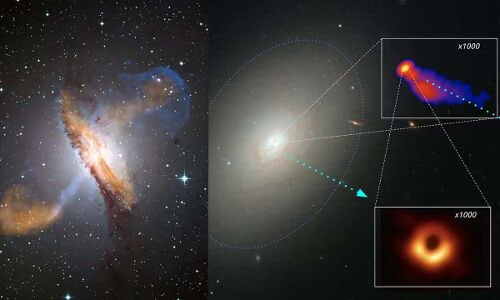Science: Black holes don’t have a lot of identifying features. They come in one color (black) and one shape (spherical). The main difference between black holes is mass: some weigh as much as a star like our Sun, while others are about a million times more. Stellar-mass black holes can be found in any galaxy, but the really big ones (known as supermassive black holes) are found at the center of galaxies.
These supermassive behemoths are still quite small when viewed from a cosmic perspective, typically containing only about 1% of the mass of their host galaxy and being only one millionth of its width. However, as we have just discovered, there is a surprising relationship between what happens around a black hole and the size of the entire galaxy around it. Our results are published in Nature Astronomy.
Supermassive black holes are quite rare. Our Milky Way galaxy has one at its center (named Sagittarius A*), and many other galaxies also have a single supermassive black hole at their center.
Under the right conditions, dust and gas falling into these galactic cores can form a disk of hot matter around the black hole. This “accretion disk” in turn generates a super-heated jet of charged particles that shoots out from the black hole at mind-boggling velocities, close to the speed of light. To get a good look at quasar jets, astronomers often use radio telescopes. In fact, we sometimes combine observations from several radio telescopes located in different parts of the world.
Using a technique called Very Long Baseline Interferometry, we can actually make a single telescope the size of the entire Earth see the entire galaxies. This giant eye is much better at resolving fine detail than any individual telescope.
As a result, not only can we see objects and structures much smaller than we can with the naked eye, but we can do even better with the James Webb Space Telescope.
